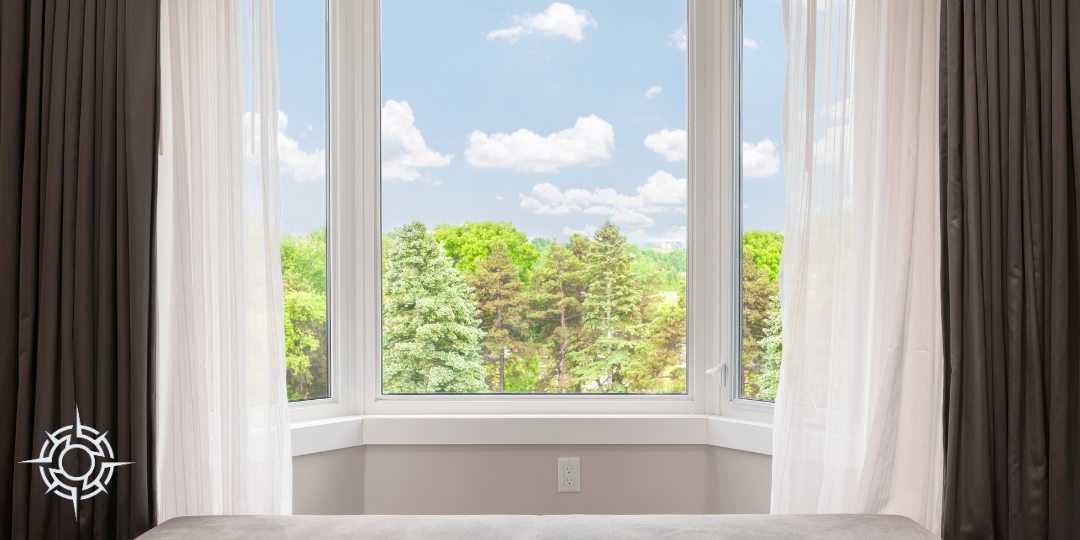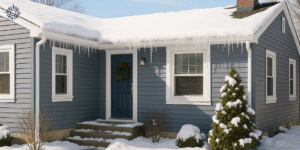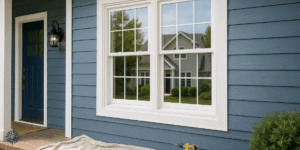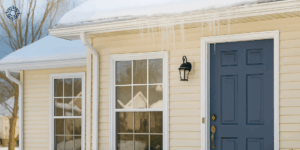Can One Window Do It All?
Can a single window replacement expand your home’s usable space, bring in more natural light, improve airflow, increase property value, and give your cat a sunny place to nap? The answer is yes—with a bay window. These uniquely designed window assemblies do much more than provide a view. They redefine the way a space looks and feels—inside and out.
Homeowners often turn to replacement bay windows not just for style, but for practical benefits such as improving energy efficiency. While the ROI on most window upgrades is already impressive—around 60–70%, according to This Old House—bay windows can offer even more, thanks to their added square footage, enhanced natural lighting, and standout curb appeal. Whether you’re modernizing your home or planning a full remodel, bay windows are worth considering.
What is a Bay Window?
What are bay windows, exactly? A bay window is a set of three windows that project outward from a home’s exterior wall. The configuration typically includes a large, fixed center window that runs parallel to the house, flanked by two smaller angled windows on each side. These angled units connect the center panel back to the wall, forming a “bay” that protrudes outside the home.
This structure creates a small nook inside—ideal for a cozy bench, reading area, or decorative display—while creating dimension on the outside. The angled windows can either be fixed or operable, depending on your preferences for airflow.
Bay windows are popular in kitchens, living rooms, bedrooms, and even entryways. Their flexibility makes them a timeless option that can match a wide range of architectural styles, from classic craftsman to contemporary homes.
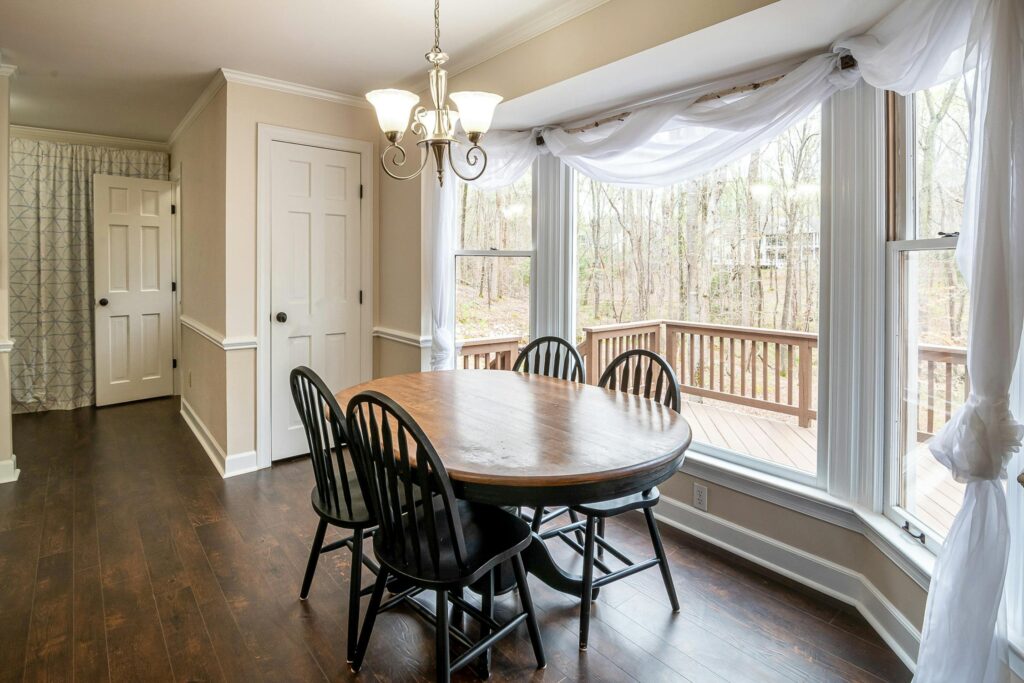
What are the Benefits of Bay Windows?
Bay windows are prized for both form and function. Here are the top reasons homeowners love them:
1. Extra Space
Because they extend past the wall, bay windows add usable square footage. Whether you install a bench, a plant shelf, or a breakfast nook, the added space is both practical and inviting.
2. Natural Light and Ventilation
The multi-panel design of bay windows allows for more natural light from multiple angles. When the side windows are operable, they also improve cross-ventilation, helping cool your home naturally.
3. Visual Appeal
From the curb, bay windows enhance your home’s architectural interest. Inside, they draw the eye and become a design focal point. They also increase perceived room size, making small spaces feel more open.
4. Increased Home Value
Bay windows often contribute to a home’s resale value, especially when combined with energy-efficient features. They improve appearance, add space, and offer higher energy savings, which today’s buyers are actively looking for.
5. Comfort and Charm
A bay window is the perfect place to relax with a book, enjoy morning sunlight, or give pets a cozy perch to watch the world go by. Their charm and comfort make them a homeowner favorite.
Bay Window Configuration Options
One of the key benefits of bay windows is configurability. The classic layout includes:
- A fixed center picture window for unobstructed views
- Two operable side windows (commonly casement or double-hung) for ventilation
However, the possibilities are wide open. Some popular variations include:
- Double-Hung Bay Windows – Ideal for traditional homes and easy to clean from inside.
- Casement Bay Windows – Hinged at the sides, they open outward for maximum airflow.
- All-Fixed Bay Windows – Great for modern homes focused on clean lines and uninterrupted views.
Your choice depends on location, room size, airflow preferences, and your home’s architectural style. A professional contractor—like Compass Exteriors—can help you determine the best configuration based on both functionality and design goals.
Types of Bay Windows
While the basic shape is consistent, there are several different types of bay windows, each with a slightly different design and impact on your home’s structure and style.
Canted Bay Windows
This is the most common bay window type. It features a flat center window and two angled side windows—typically set at 45 degrees. Canted bay windows are typically installed on the first floor, with a base that meets the ground or overhangs slightly. Their symmetrical design fits well with many home styles.
Box Bay Windows
Box bay windows have side panels that meet the center window at a 90-degree angle, forming a “box-like” projection. These offer a more squared-off interior nook, which can be ideal for window seating or larger display spaces. They tend to blend well with modern or transitional home styles.
Oriel Bay Windows
Unlike other bay windows, oriel windows do not extend all the way to the ground. They’re mounted on the upper floors and are supported by decorative brackets or masonry. These windows are great for adding architectural interest to second-story rooms and can even be installed over entryways for dramatic effect.
Each style offers unique aesthetic and functional benefits, so choosing the right one depends on your home’s layout and your goals for the space.
Bay Windows Cost and ROI
When budgeting for a bay window, it’s important to understand what goes into the pricing. On average, bay windows cost between $1,500 and $4,500, depending on size, materials, customizations, and installation complexity. For large custom units or higher-end materials, that cost can rise to $6,000 or more.
Factors That Affect Cost:
- Window size and type
- Frame material (vinyl, wood, composite)
- Energy-efficient upgrades (Low-E glass, triple-pane)
- Structural modifications to support the bay projection
- Installation labor and location (first floor vs. second floor)
Despite the higher price tag compared to flat windows, bay windows offer excellent long-term value. In addition to a 60–70% ROI at resale, energy-efficient bay windows help reduce heating and cooling costs by improving natural airflow and reducing reliance on artificial lighting.
If you’re considering window upgrades for energy savings, space, and resale appeal, a bay window is a high-impact choice worth the investment.
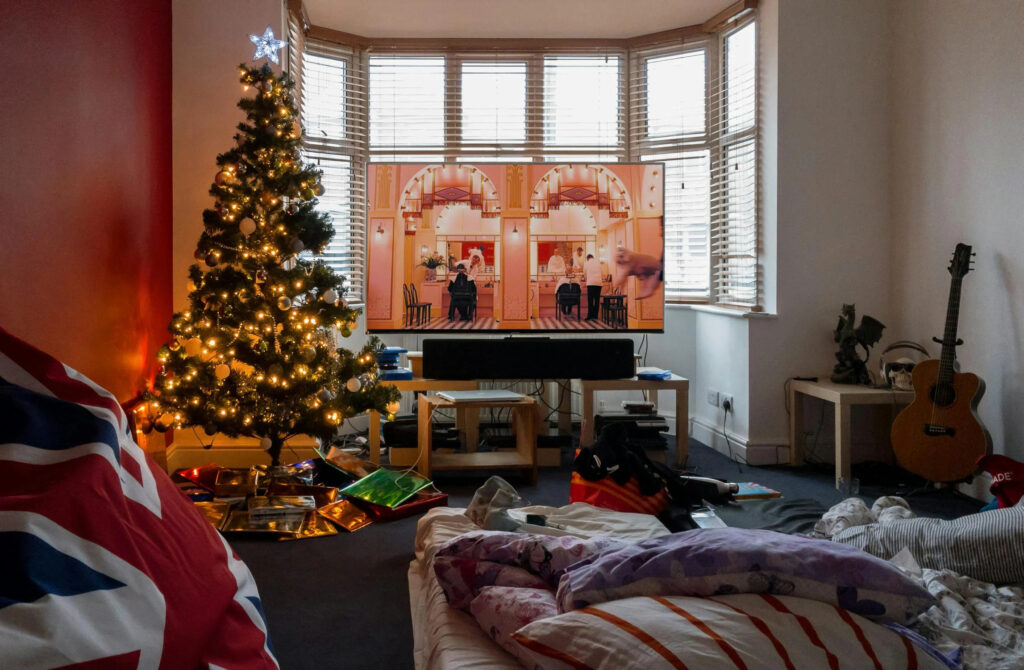
Design & Treatment Ideas for Bay Windows
Once installed, your bay window becomes a natural design focal point—and the fun begins. Here are some bay window ideas for maximizing style and function:
Interior Treatments for Bay Windows:
- Roman shades for soft elegance and clean lines
- Wood or faux wood blinds for adjustable light control
- Sheer curtains paired with side panels for a layered, airy look
- Motorized shades for hard-to-reach upper windows
Styling Tips:
- Add a window seat with built-in storage for a cozy reading nook
- Install floating shelves inside the bay for plants or books
- Use sconces or pendant lighting to frame the area and add nighttime ambiance
Bay windows offer creative flexibility, whether you prefer traditional trim, minimalist finishes, or eclectic flair. If you’re looking for inspiration for treatments for bay windows, Pinterest and interior design blogs are full of ideas to match every taste and budget.
Why Choose Compass Exteriors for Bay Windows in Minneapolis?
At Compass Exteriors, we’ve helped hundreds of homeowners in Minneapolis and the surrounding areas bring their bay window vision to life. Whether you’re replacing a dated unit, upgrading for energy efficiency, or installing a new bay window from scratch, we guide you through every step—from design to final installation.
Our team takes pride in craftsmanship, clear communication, and long-lasting results. We’ll walk you through bay window types, help you choose the right configuration, and ensure your project is done right—the first time.
Ready to add light, beauty, and extra space to your home?
Contact Compass Exteriors today for a free consultation on your next bay window project.

